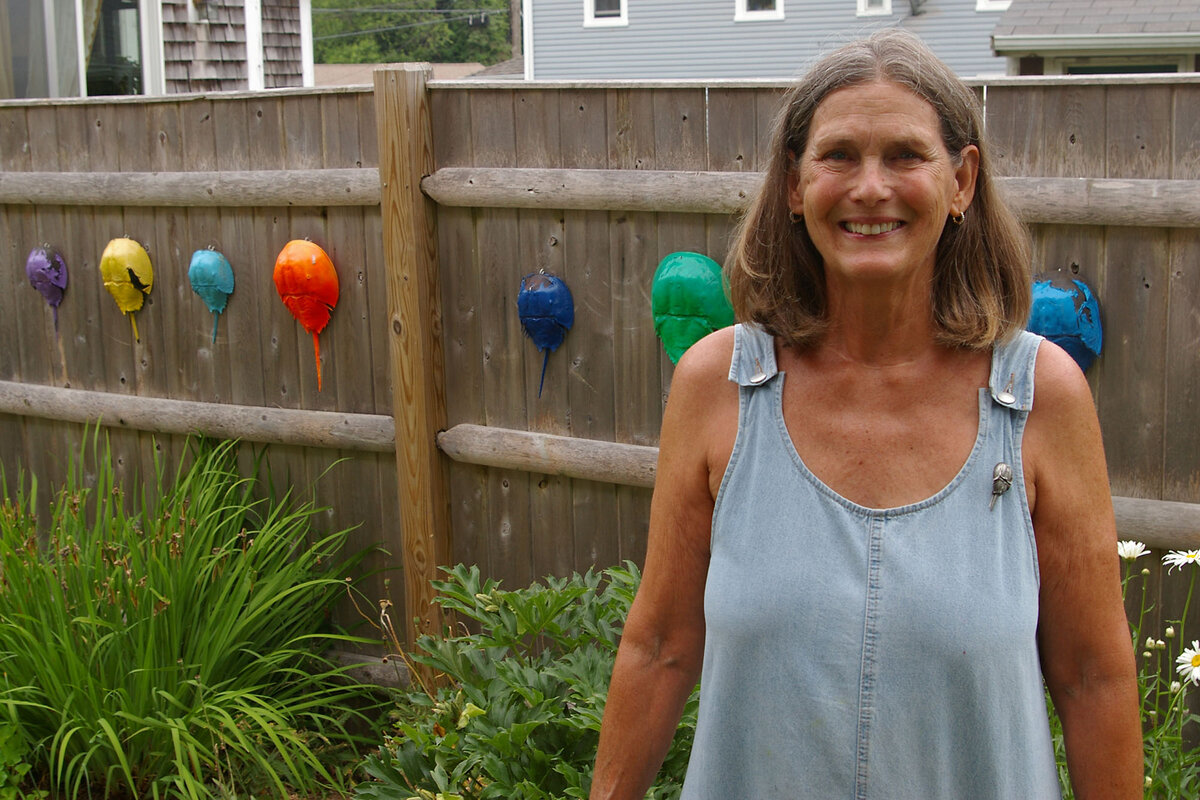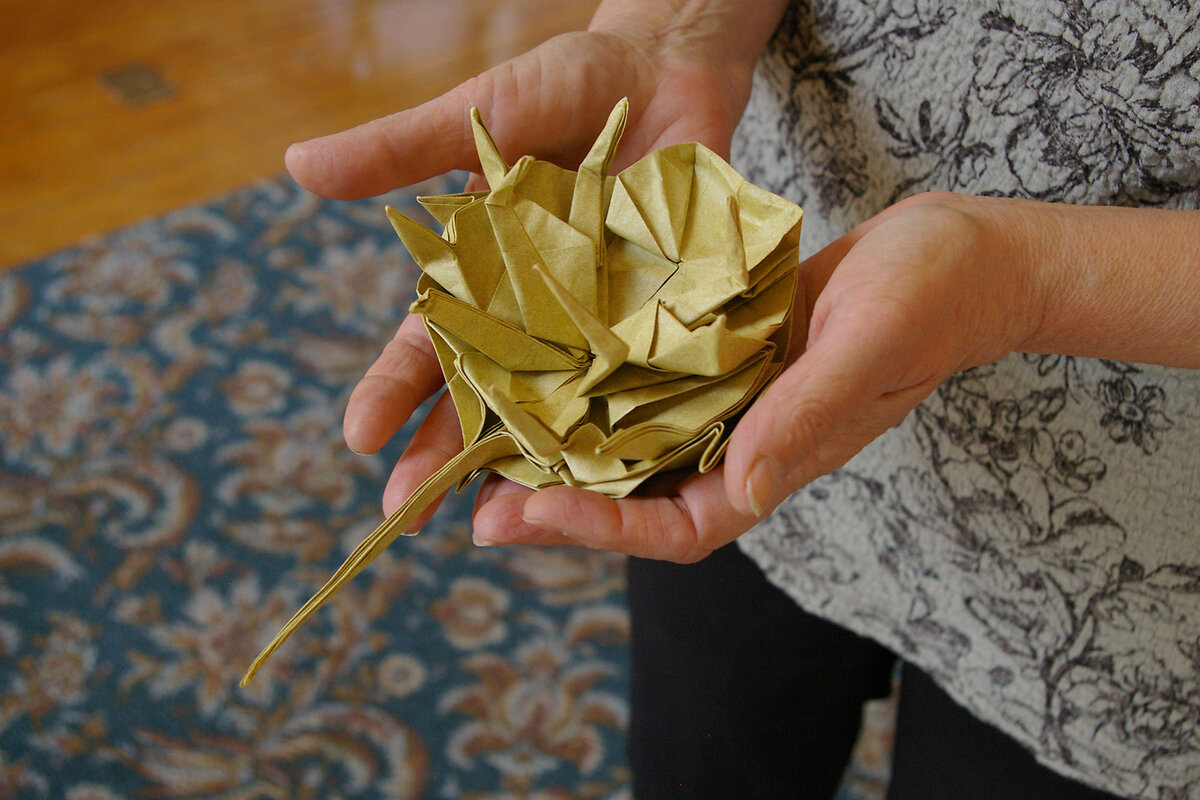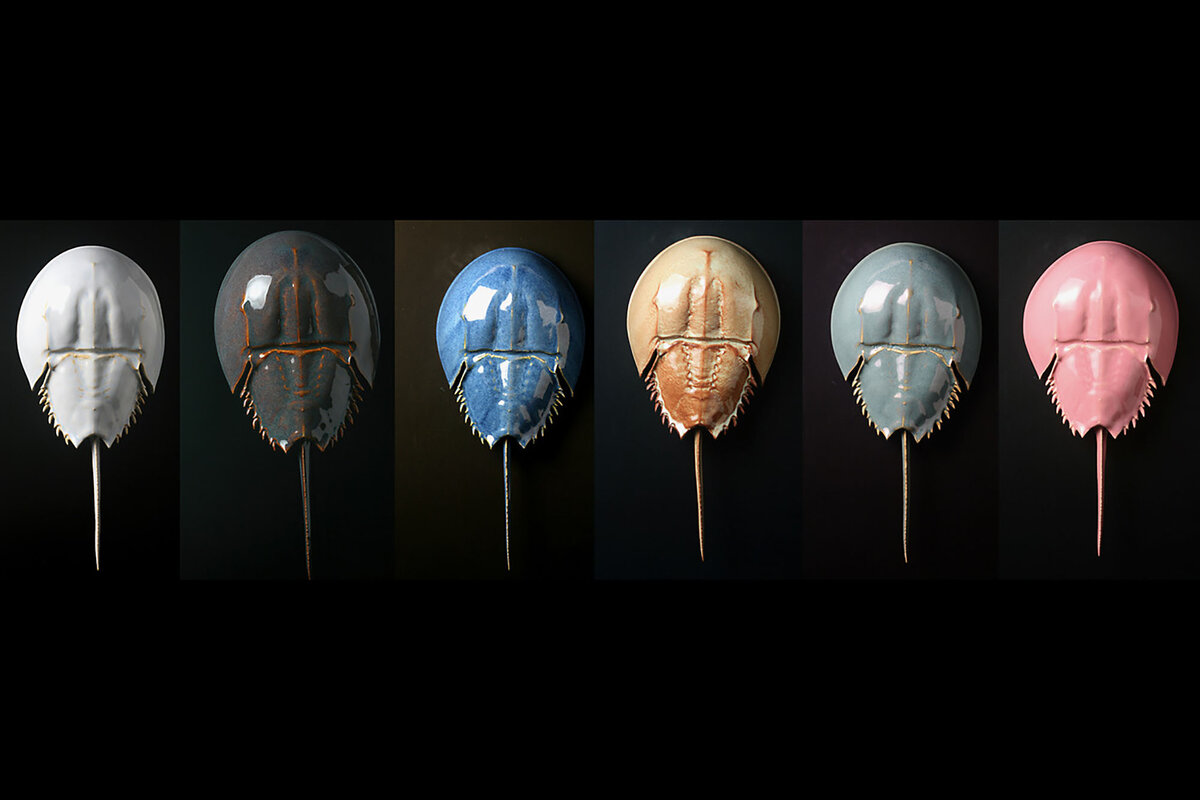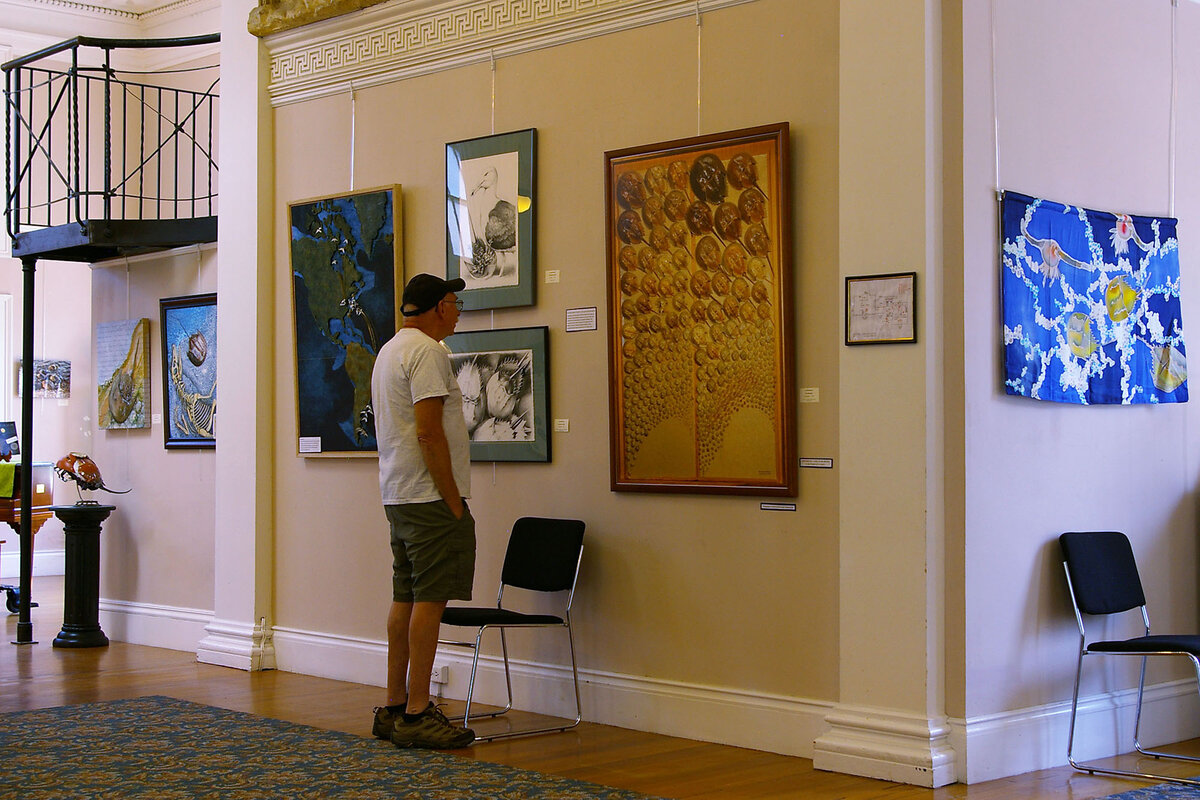Meet the coast’s living fossils. Horseshoe crab gets an image boost from artists.
Loading...
| NORTH PLYMOUTH, MASS.
With its dome shape and spiky tail, the horseshoe crab might at first look like a fearsome visitor from another planet. But for artists like Heidi Mayo, the ancient creature is an approachable muse.
A collection of 13 brightly painted horseshoe crab shells hangs along her back fence here. On her kitchen table sits a novel she wrote, inspired by encounters with the living fossil. Upstairs, in the top-floor studio where she teaches art classes, two spiny molts serve as figure-drawing models.
“They’re really part of my life,” she says. “A reverence for them – that’s what I have.”
Why We Wrote This
A story focused onThe horseshoe crab has been misunderstood by beachgoers for years. Artists are part of a new preservation effort, helping people to see the ancient creature in a new light.
A few miles away, at the Plymouth Center for the Arts, the public can see more of her work – and that of other artists, similarly inspired – at a new exhibit, “The Horseshoe Crab: Against All Odds.”
The exhibition, featuring representations in watercolor, metal, and textiles, is part of a broader effort to save and conserve the once-misunderstood sea animal, which is now facing new threats.
“The essence of this show [is] that horseshoe crabs are in trouble,” says Joan Pierce, one of the curators, her silver horseshoe crab earrings swaying as she speaks.
Although the creatures are no longer eradicated as pests that disturb a bucolic summer beach scene, fishers use them as bait for whelk fishing, and pharmaceutical companies use their unusual blue blood to test products for toxins.
The Atlantic States Marine Fisheries Commission reports that the Northeast horseshoe crab population is currently in a “neutral,” or stable, state. But the population remains vulnerable, according to advocates. On March 19, the Massachusetts Marine Fisheries Advisory Commission approved protections preventing the harvest of horseshoe crabs during their spring spawning season.
Those championing the creature are captivated by the lessons it has to offer about resilience.
“They’ve been around for 450 million years, and so they have clearly evolved strategies for taking advantage of what’s available to them,” says Sophia Fox, an aquatic ecologist at the Cape Cod National Seashore.
The horseshoe crab isn’t actually a crab, despite its name. More closely related to ticks and spiders, it walks on 10 spindly legs in the coastal shallows, feeding on worms, algae, and other inhabitants of the ocean floor. The long, pointed tail protruding from its hardened exoskeleton is often mistaken for a stinger. At times, the public has seen them only as a nuisance, hauling them away or killing them on sight – not understanding that their eggs, which migratory shorebirds eat, help the coastal ecosystem.
But the tide is turning. The curators of “Against All Odds” felt an urgency to raise awareness about the crabs’ plight. They issued invitations to artists to highlight “the beauty of these ancient creatures, their ecological importance, and the threats they face.” They hoped for 35 submissions. Then more than 160 offerings rolled in from more than 70 artists. Of those submitted, 74 works made it into the final show.
The exhibition pairs art with educational content from Mass Audubon, New England Coastal Wildlife Alliance, and the Cape Cod Museum of Natural History. Some of the images are meant to be provocative: In one, a horseshoe crab, bronze and gleaming, lies belly up, stretching its legs toward the sky.
“This is not just pretty pictures on the wall,” Ms. Pierce says. “This is about education and advocacy. ... We want to see stricter regulations about harvesting.
In Ms. Mayo’s piece, “Timelines,” 42 sketches of the horseshoe crab appear alternately right side up and upside down. She compares them to the phases of the moon, each one in its own patterned square, suspended in rows by miniature clothespins. They seem, at once, delicate and enduring.
Elsewhere in New England, other artists are also trying to raise awareness. In Rhode Island, another horseshoe crab hub, multidisciplinary artist Eli Nixon hopes that learning about the animal can create a new culture of compassion and responsibility. Mx. Nixon’s 2021 illustrated manual and field guide “Bloodtide: A New Holiday in Homage to Horseshoe Crabs” celebrates the longevity of horseshoe crabs. “Who else is a better teacher of how to survive than this one?” Mx. Nixon says.
To honor them, Mx. Nixon often wears a homemade cardboard horseshoe crab costume to parades, which becomes a point of connection between perfect strangers. Everyone, it seems, has a story to share.
Back in Massachusetts, Mark Rea remembers in his youth, before tourism swept the shores of Nantucket, when horseshoe crabs drifted along the seafloor undisturbed.
“It was ... this otherworldly thing on the beach,” he says.
For the past 18 years, Mr. Rea has made ceramic casts of the exoskeletons of horseshoe crabs when he finds their remains on Cape Cod beaches. He fires the lifelike molds, glazing them with vibrant, glossy colors. While most of his creations look peaceful, several of them depict the toll the bait and pharmaceutical industries have had. Creating the ceramic horseshoe crabs is now his full-time job – he makes 600 a year and sells his work online and in local galleries.
In her home studio in North Plymouth, Ms. Mayo sticks out one red flip-flopped foot to show the bright-blue horseshoe crab tattoo on her ankle. A silver pin in the same shape gleams on the shoulder of her dress.
“I’ve always felt akin to horseshoe crabs,” she says, recalling her childhood on the beaches of nearby Duxbury, Massachusetts. “Then I became an advocate ... without even meaning to.”










